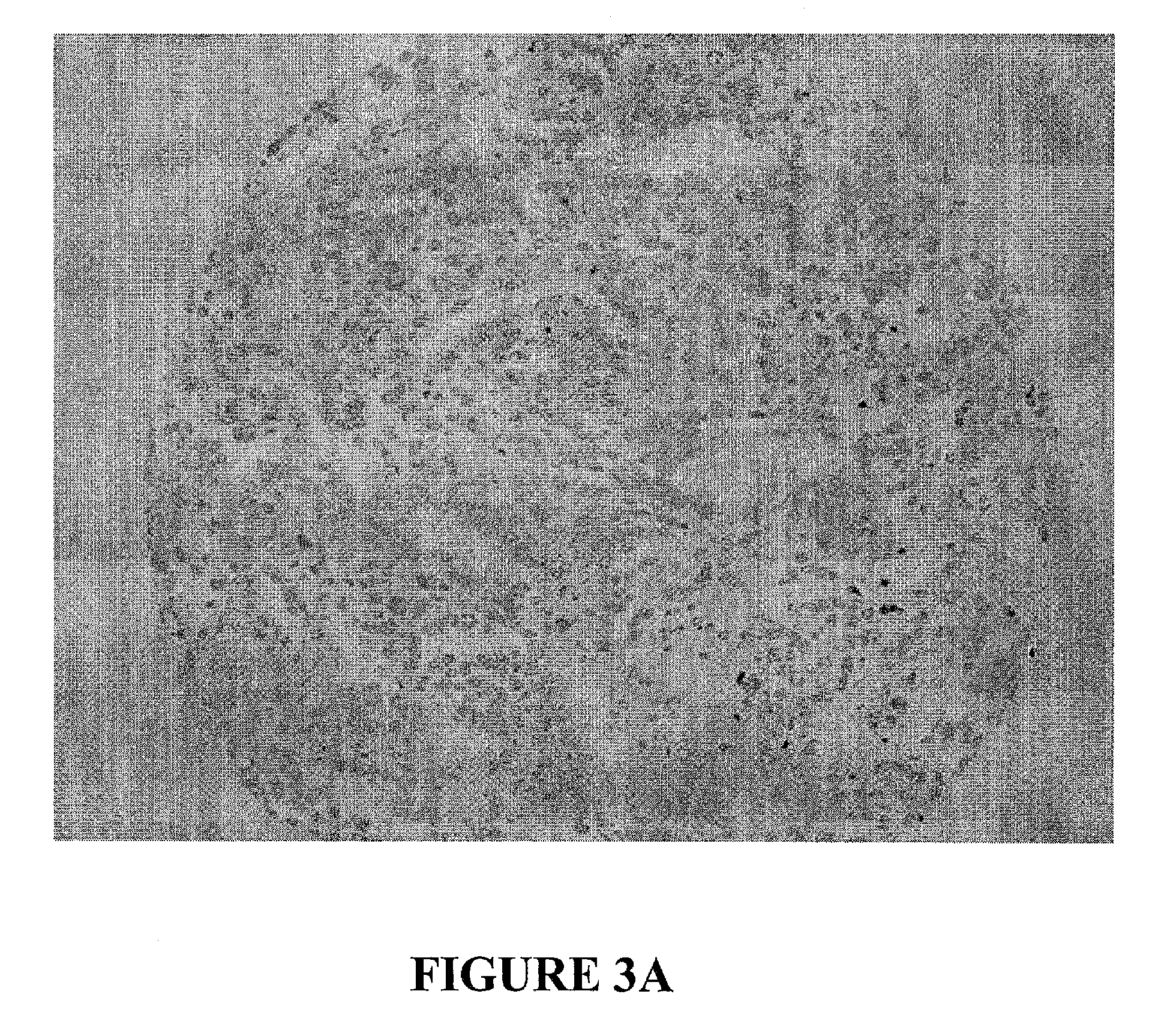Antibodies to MUC16 and methods of use thereof
a technology of antigen binding and muc16, which is applied in the field of antibodies and antigen binding fragments, can solve the problems of not being able to detect the proximal residual muc16 protein fragment, the sensitiveness of ca125 for general cancer screening, and the inability of antibodies to be useful screening tools, so as to reduce one or more symptoms of disease, the binding level is altered.
- Summary
- Abstract
- Description
- Claims
- Application Information
AI Technical Summary
Benefits of technology
Problems solved by technology
Method used
Image
Examples
example 1
Materials And Methods
[0154]The following is a brief description of the exemplary materials and methods used in the subsequent Examples.
Cell Cultures:
[0155]OVCAR3, SKOV3, and A2780 cell lines were obtained through the American Type Culture Collection (ATCC, Manassas, Va.) and sustained in culture according to the ATCC literature. For the creation of MUC16+ transfected cell lines, the carboxyterminus portion of the MUC16 cDNA was introduced as green fluorescent protein fusion proteins using the Vitality phrGFP vector expression system (Stratagene, La Jolla, Calif.). Stable cell lines were selected using geneticin (G418, Invitrogen, Grand Island, N.Y.) in their respective culture media and isolated by expression of Green Fluorescence Protein. Stable transfectants were routinely maintained in G418 in their culture media respectively. The ΔMUC16c114 transfectants have cell surface expression of MUC16 protein from the putative cleavage site to the carboxyterminus (AA 1776 to 1890) (12).
Mo...
example 2
Generation and Characterization of Anti-MUC16 Monoclonal Antibodies
[0168]MUC16-directed monoclonal antibodies were isolated by ELISA-based screening using both the individual peptides and recombinant GST-ΔMUC16c114 protein followed by sequential subcloning for single cell clones.
Tables 1A and 1B:
[0169]MUC1-6-carboxyterminus monoclonal antibodies showing their reactivity to GST-ΔMUC16c114 western, FACS analysis on OVCAR3 wild type cells
[0170]
TABLE 1APeptide 1Peptide 2Peptide 3ELISA(1:10)ELISA(1:10)(1:10)Hybrid-GST-Hybrid-GST-ELISAGSTomaMucCD(1:1)omaMucCD(1:1)HybridomaMucCD(1:1)SupsWesternOVCAR3SupsWesternOVCAR3SupsWesternOVCAR3(1:1)+ / −FACS + / −Isotype(1:1)+ / −FACS + / −Isotype(1:1)+ / −FACS + / −Isotype10A2+−IgG1, IgM13H1Weak−IgG122E10+−IgG2b23D4−−missing28F8++IgG1, IgM22F11Weak−IgM2F4Weak−IgG1, IgM11B6−−IgM19G4Weak−IgG1, IgM9B11Weak+ / −IgG14C7+−IgG131A3Weak−IgG123D3Weak+IgG1, IgG2b28F7++IgG14C2+−IgG1, IgM30B1−−IgG19C7++IgG127G4+−IgM31B2+−IgM9C9++IgG1, IgG2b19D1+−IgG2b4H11++IgG2b, IgM22F1+−Ig...
example 3
Immunohistochemistry Results:
[0177]Given their highly specific binding affinities, the antibodies 9C9, 4A5, and 4H11 were characterized for utility in immunohistochemistry using OVCAR3 cell lines. Of the three, the 4H11 antibody was selected to be optimized for use in human tissues based on its robust, sensitive and specific staining pattern as compared to the other two antibodies.
[0178]A. Ovary
[0179]Two high-stage, high-grade ovarian serous carcinoma tissue microarray slides composed of 419 cores, representing primary, metastatic and recurrent tumors from 40 patients were stained with both OC125 and 4H11 monoclonal antibodies (FIG. 2). The OC125 tissue microarrays showed 279 (66%) cores with 3-5 staining, 99 (24%) with 1-2 staining, and 41 (10%) with no staining. The 4H11 tissue microarrays showed 236 (56%) with 3-5 staining, 91 (22%) with 1-2 staining, and 92 (22%) with no staining. The two antibodies were concordant in 233 (56%) cores, equivocal in 161 (38%), and discordant in 25...
PUM
| Property | Measurement | Unit |
|---|---|---|
| concentration | aaaaa | aaaaa |
| weight | aaaaa | aaaaa |
| volume | aaaaa | aaaaa |
Abstract
Description
Claims
Application Information
 Login to View More
Login to View More - R&D
- Intellectual Property
- Life Sciences
- Materials
- Tech Scout
- Unparalleled Data Quality
- Higher Quality Content
- 60% Fewer Hallucinations
Browse by: Latest US Patents, China's latest patents, Technical Efficacy Thesaurus, Application Domain, Technology Topic, Popular Technical Reports.
© 2025 PatSnap. All rights reserved.Legal|Privacy policy|Modern Slavery Act Transparency Statement|Sitemap|About US| Contact US: help@patsnap.com



